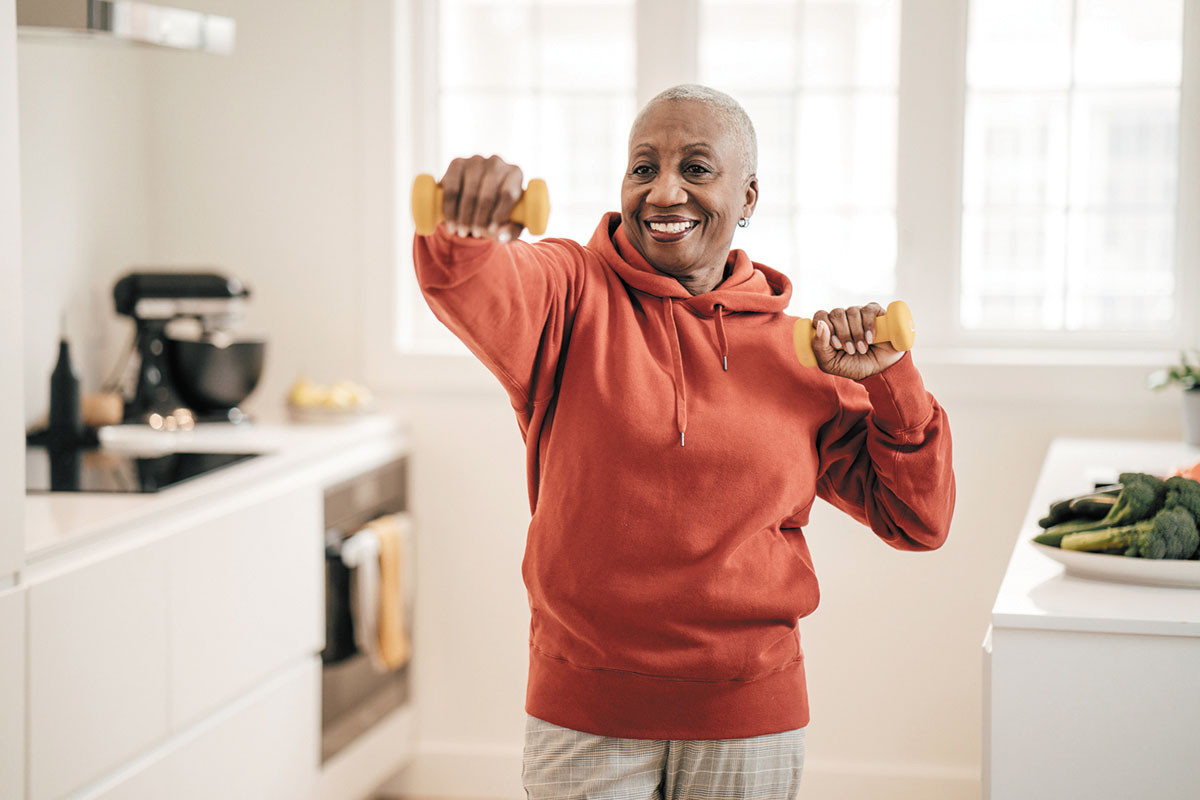
5 timeless habits for better health

What are the symptoms of prostate cancer?

Is your breakfast cereal healthy?

When pain signals an emergency: Symptoms you should never ignore

Does exercise give you energy?

Acupuncture for pain relief: How it works and what to expect

How to avoid jet lag: Tips for staying alert when you travel

Biofeedback therapy: How it works and how it can help relieve pain

Best vitamins and minerals for energy

Should you take probiotics with antibiotics?
Physical Activity Archive
Articles
Move of the month: Arm curls
Arm curls, which strengthen your biceps, can be done with dumbbells or household items such as cans of soup or water bottles.
Revitalize your walking routine
When a daily walk starts to feel humdrum, adding short bursts of fast walking (intervals) may help. Using earbuds to listen to music, books, or podcasts may also encourage people to stick with this heart-healthy exercise. Wearing appropriate attire, including a brimmed hat, slim-legged pants or shorts, and waterproof shoes may also keep walking enjoyable.
Taking more steps a day might reduce dementia risk
People who take between 3,800 and 9,800 steps daily may reduce their risk for dementia, and walking at a brisk pace could offer even more protection, according to a 2022 study.
Reviewing your wellness portfolio
As with a financial portfolio, older adults should routinely review their wellness portfolio to ensure their health investments meet their short-and long-term goals. Working with their doctor, personal trainer, and nutritionist, they can identify areas that require changes and implement new strategies. Older men often don't make investments in strength training, balance, and their mental health, but should.
Protect yourself from cardiovascular disease
A 2022 report predicts higher rates of cardiovascular disease (CVD)—heart disease, heart attack, heart failure, and stroke—over the next three decades. Older adults can lower their CVD risk by managing high blood pressure, high cholesterol, and excess weight. Also, they should follow the big three healthy-heart habits: a plant-based diet, sufficient amount of recommended exercise, and at least seven hours of sleep.
Move of the month: Chair stand
A simple exercise that involves standing up from a chair can help strengthen the muscles in the lower body. Hand placement, which can be on the chair's arms, the thighs, or across on the chest, can make the exercise easier or harder.
Adding strength training to aerobic exercise may fuel longevity
A 2022 study found that people who did at least two sessions of strength training as well as 2.5 hours of moderate-to-vigorous aerobic activity each week were 30% less likely to die during an eight-year study period, compared with people who did less strength training.
Reclaim your pre-pandemic function
Many people have become deconditioned and lost some physical function as a result of inactivity during the pandemic. This may be causing them to change their habits, patterns, and activities because they don't think they can do them or don't feel like doing them anymore. People who've lost physical function as a result of inactivity can take several steps to get function back. Examples include setting goals, tracking activity, getting help from a physical therapist, adding weight training to an exercise regimen, exercising with a friend, and not giving up.
The many ways exercise helps your heart
Aerobic and muscle-building exercises can trigger physiological changes that improve blood vessels and metabolism in ways that help prevent all the major risk factors that contribute to heart disease. These include high blood pressure, diabetes, obesity, and unhealthy cholesterol levels. Exercise can also improve mental health problems such as depression and stress, which are common but underrecognized risks for heart disease.
Poor physical function may predict cardiovascular disease
A new study suggests that older adults who maintain an high level functional fitness have a lower their risk of heart attack, heart failure, and stroke compared with those who are not as fit.

5 timeless habits for better health

What are the symptoms of prostate cancer?

Is your breakfast cereal healthy?

When pain signals an emergency: Symptoms you should never ignore

Does exercise give you energy?

Acupuncture for pain relief: How it works and what to expect

How to avoid jet lag: Tips for staying alert when you travel

Biofeedback therapy: How it works and how it can help relieve pain

Best vitamins and minerals for energy

Should you take probiotics with antibiotics?
Free Healthbeat Signup
Get the latest in health news delivered to your inbox!
Sign Up











